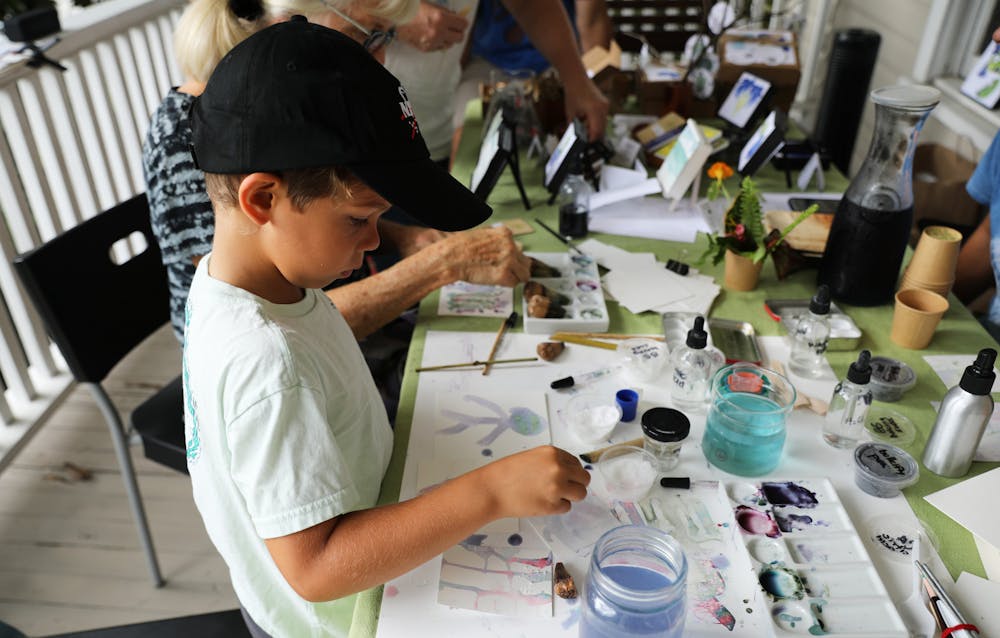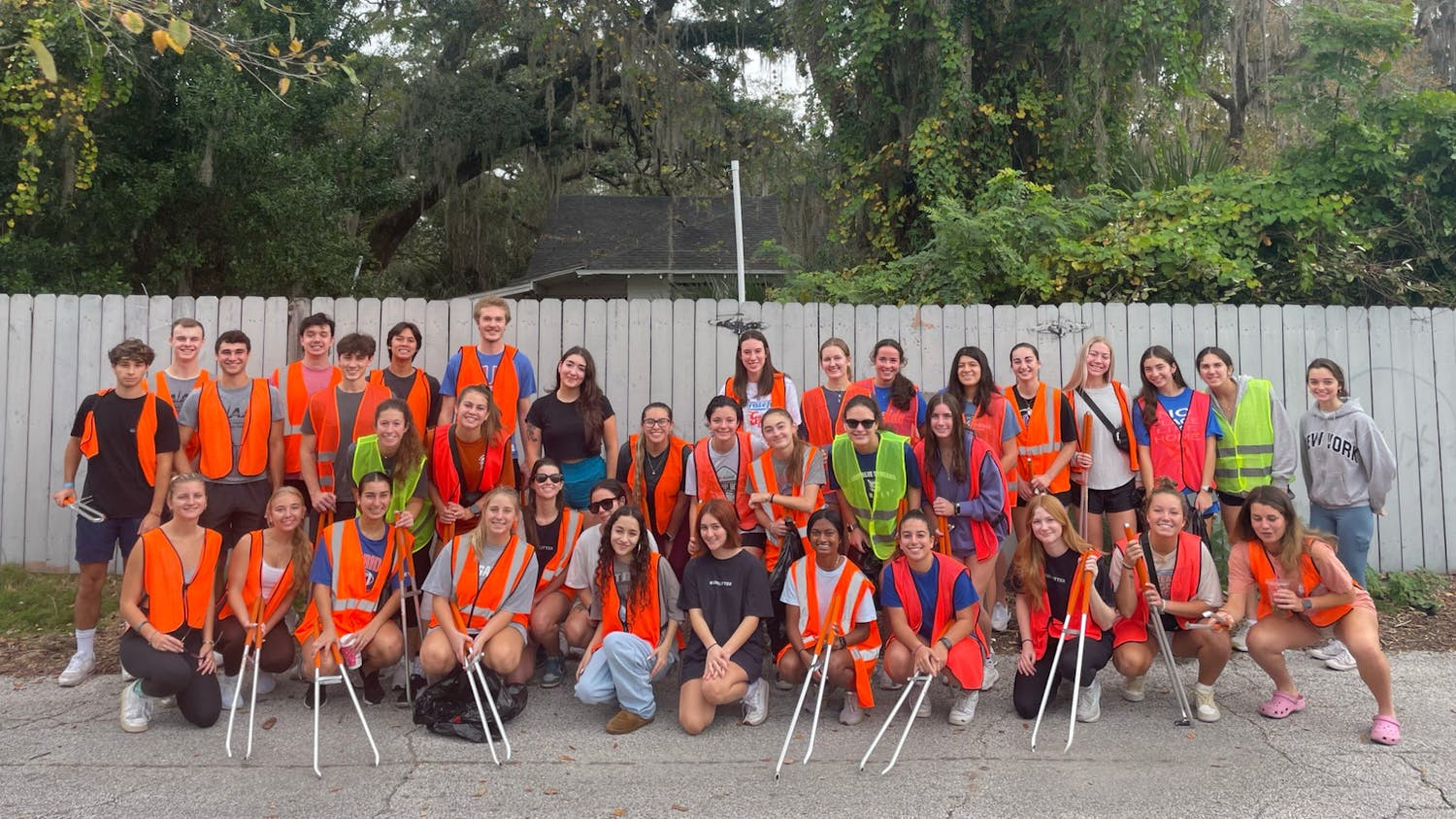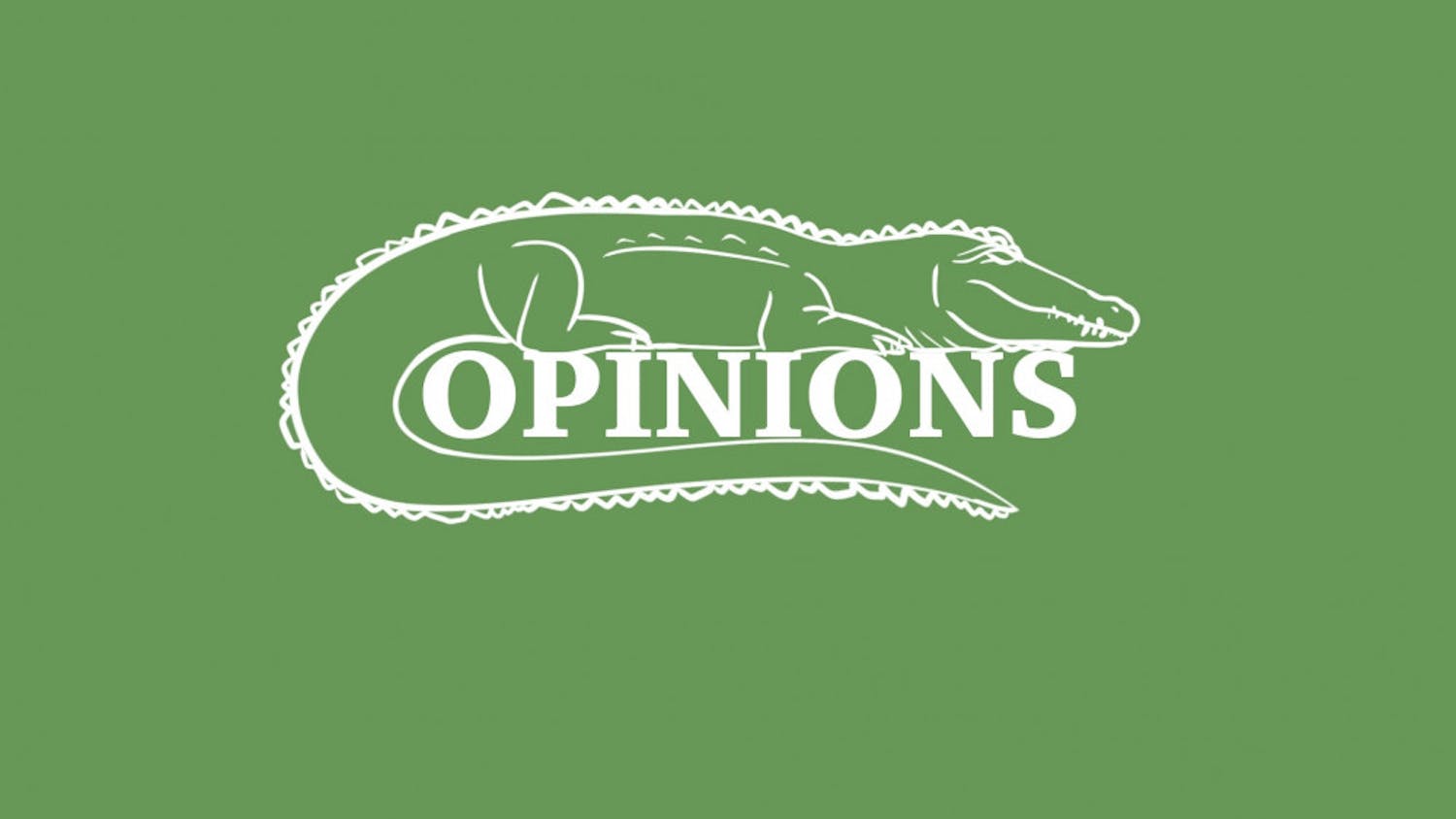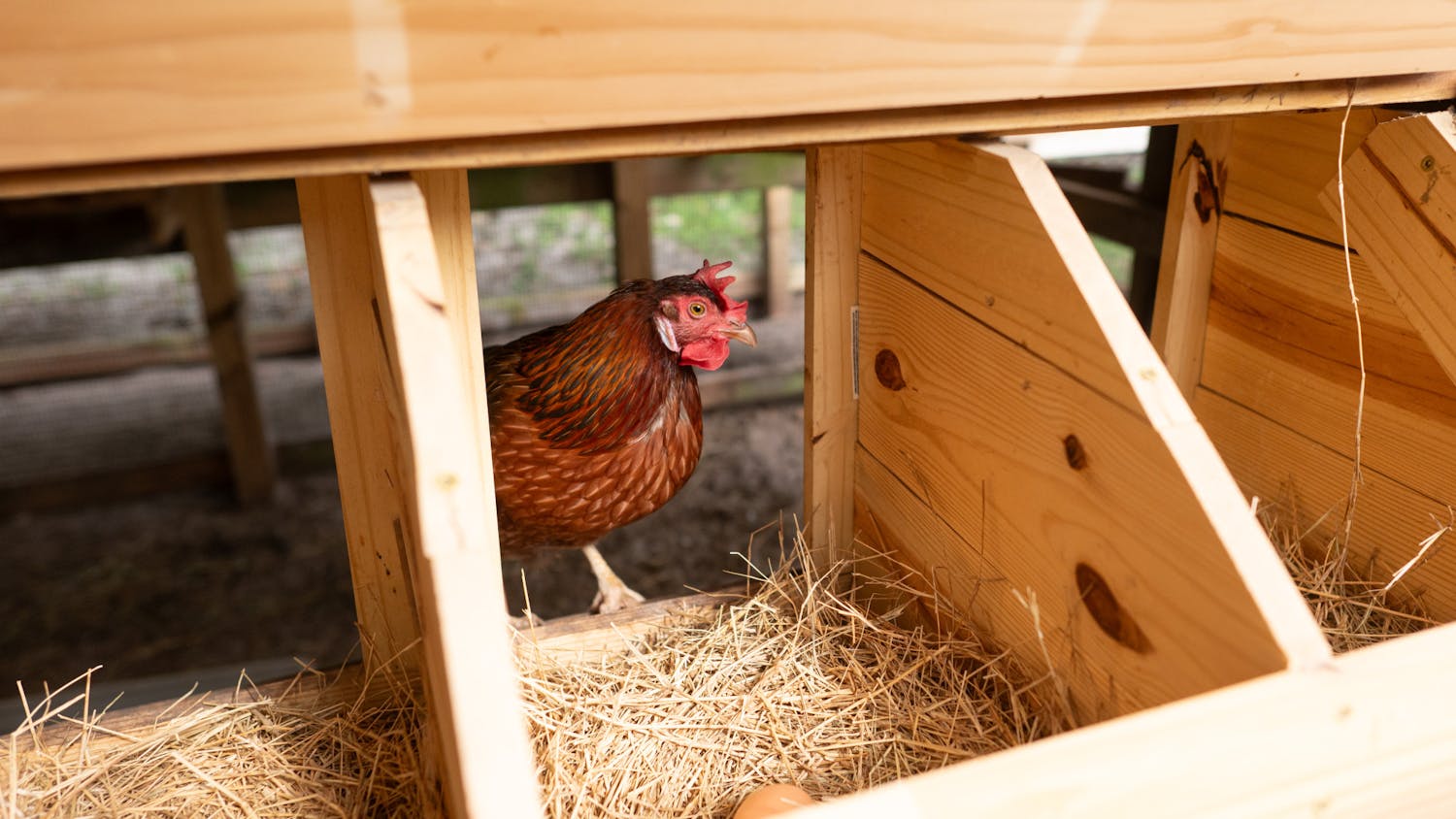For artists like Hannah Banciella, onion skins are more than just food scraps.
When the COVID-19 pandemic started, Banciella found herself without access to UF’s art studio. Inspired by the flora in her own backyard, she began collecting fallen acorns and loquats, boiling them to create natural color for her recycled sketchbooks.
In the world of eco-art, natural pigments found in vegetation are often used to make sustainable art creations. Banciella was one of four artists featured in the Artisans’ Guild’s first Eco-Art Making Extravaganza Saturday.
The extravaganza went from 11 a.m. to 2 p.m. at the Artisans’ Guild Gallery, located at 224 NW 2nd Ave. Rain or shine, the event included free art demonstrations, make-and-take workshops and eco-art displays.
During the event, attendees were able to participate at each artist’s station, where they workshopped a variety of eco-art activities like flower hammering, eco-printing, sewing with recycled textiles and tea tasting.
According to the EcoArt Network of international artists, ecological art, also known as eco-art, is
“an art practice that intends to stimulate dialogue and encourage the long-term flourishing of the social and natural environments in which we live.” Eco-artists often use nature-based materials to advocate for environmental protection.
In Gainesville, eco-artists are turning their focus from toxic paints and chemically bleached papers to concentrating on natural, reusable and recyclable art materials.
Banciella is a 22-year-old UF graduate with a specialization in drawing and a certificate in ceramics. Her workshop station centered around helping attendees create collage art from handmade paper and hand-dyed fabrics.
In addition to sourcing all-natural materials, Banciella takes free books from local bookstores and recycles them into sketchbooks, infusing them with natural pigments. She said one of her favorite aspects of eco-art is the unpredictability of the finished products.
“At first, I was trying to plan them out and give them a nice composition, but I had to let go of that and think about different textures and different layering,” Banciella said. “It felt really cool to not know what was going to happen, to not be able to control everything that I was making like how it would be with charcoal, pencil or paper.”
For eco-artists, plants can do much more than provide color to their artwork. Brittany Boyer, the founder of Eco Stitch & Cycle, uses food scraps and local herbs to create textile pieces.
Boyer was another artist featured at the extravaganza. The mission of Eco Stitch & Cycle is to create art and reusable products from discarded materials. Through eco-art, the company hopes to build relationships within the local community and promote environmental awareness.
On Saturday, Eco Sitch & Cycle taught attendees how to make abstract textile fine art from common food scraps. Participants also learned how to make natural dyes and incorporate them into their sewing practices.
When it comes to sourcing natural pigments, some eco-artists depend on floriculture, obtaining colors from the flowers they grow themselves.
Wendy Free, a fifth-generation Florida gardener and founder of Ecoglyph, taught attendees how to grow and make paint from the butterfly-pea flower. The flower is known for its strong blue pigment and can be used to make tea, which attendees were able to taste at the event.
“It’s an unusual color because it’s so blue,” Free said. “That’s rare in the world of plant colors. It’s also pH reactive, so in the workshop, we're going to be adding a little bit of citric acid, and it changes color depending on how much you add.”
Free said the modern art industry’s inclination to use artificial paint ingredients containing copper, micro-plastics and petroleum products influenced her eco-art mindset as both an artist and art teacher.
“Some of those items are really cool, and I'm glad we have them, but as an art educator for 30 years, there were things that I really didn't feel comfortable exposing myself to, and certainly not to students,” she said.
In addition to utilizing art techniques that have been around since the Stone Age, Free also tries to avoid materials that use animal ingredients such as bone charcoal for black pigment and sable fur for paintbrushes.
“I’m really trying to be conscious of the impact of what I use, buy and share with others,” Free said. “It's kind of like wanting to eat fresh, local, as close to natural as possible food with little processing, shipping and no dangerous human-made chemicals.”
The fourth artist at the extravaganza, Kelly Perez, is the owner of Flower Fibers and has been eco-printing since 2018. She takes plants with high amounts of tannic acid and places them between two pieces of fabric. After steaming them for about 1 hour and 30 minutes, a print of the plants appears on the fabric.
Perez said the beauty of eco-printing stems from the different tones and hues that can only be derived from natural dyes.
“When you look at a flower or a plant, you're not going to just see one color, you’re going to see many different colors and many different shades,” Perez said. “If you get something that's just synthetic dye, it's a very flat, one tone color.”
The artists at the Eco-Art Making Extravaganza propel the goals of eco-art in their own ways. Free said seeing community members’ excitement and wonder as they tried out different activities was the highlight of the event.
“We were super grateful for the enthusiastic turnout and support from our community,” Free said. “It was really fun for us to witness how art-making can be made even more inviting, accessible, and creative with an eco-friendly focus.”
Contact Brenna at bsheets@alligator.org. Follow her on Twitter @BrennaMarieShe1.






